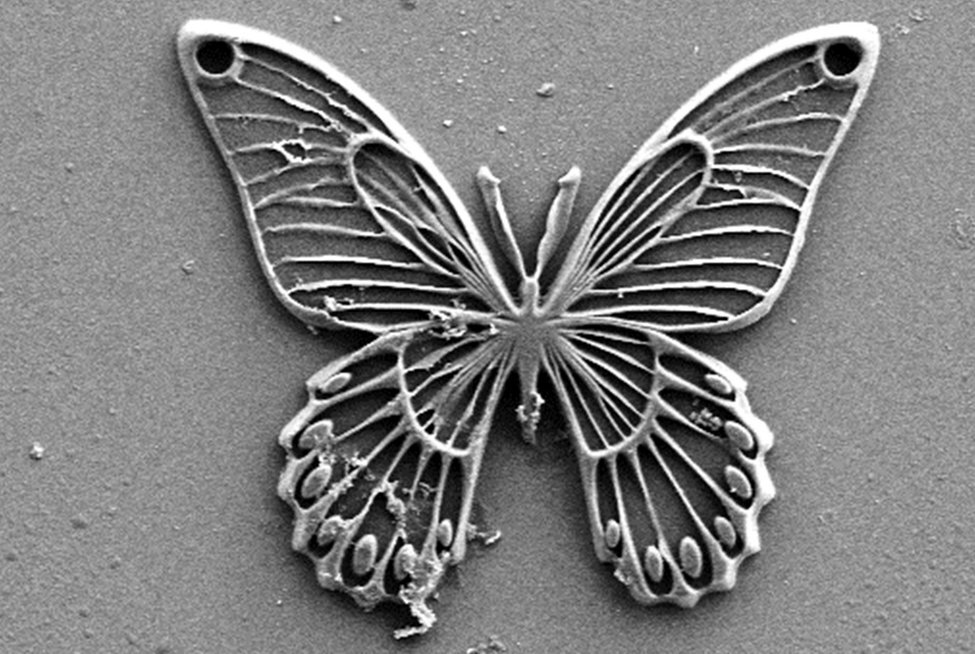Create a free profile to get unlimited access to exclusive videos, sweepstakes, and more!
3D is so last year. We can now 4D-print moving objects with smart ink
New 4D printing technology uses smart ink so objects can move.

When 3D printing became a thing, it felt like we were being fast-forwarded into the future. Now the same technology that can print action figures has nothing on 4D printing.
While 4D printing was possible before, it just got a serious upgrade now that researcher Marc del Pozo Puig, of Eindhoven University of Technology in the Netherlands, has developed new smart inks that respond to different stimuli. They can even be used with a regular 3D printer. Previous iterations created objects whose motion (which is what makes them 4D — see some in action here) was usually triggered by heat, and only underwater, but these things respond to additional stimuli in or out of water.
“What we saw was missing from 4D printing technology was a material that could perform both in air and underwater while showing preprogrammed reversible shape deformations,” del Pozo Puig told SYFY WIRE. “This would make 4D printing appealing to a wider range of fields, bringing it one step further.”
Before this breakthrough, it was possible to achieve 4D printing by 3D-printing materials known to respond to outside stimuli, such as shape memory polymers (SMPs) and hydrogels. The problem was that SMPs are unable to reverse the shape they end up taking while hydrogels could only reverse their shape deformations underwater. The inks that del Pozo Puig and his research team created (detailed more in the study here) are all made of liquid crystal monomers which can reach an in-between phase in which they show crystalline order but are still capable of flowing like liquids.
It was this liquid crystalline phase, whose possibilities are nearly endless, that allowed the researchers to reorganize the molecules of each ink the way they wanted before bonding the monomers into polymers. How these molecules are organized determines what stimuli will cause an object made of that particular ink to move around. The polymer will go through an anisotropic shape change, meaning a change of shape in different directions, from a stimulus. This explains almost unreal movements such as bending, twisting, expansion and contraction.
“In order to obtain movement from other stimuli we needed to incorporate monomers that will change their configurations with light, to obtain light response, or that have groups that attract moisture, to obtain humidity response,” said del Pozo Puig.
There are two techniques which make that possible. Printing something on a micrometer scale needs a technique known as direct laser writing by two-photon polymerization (DLW-TPP), which works with the thinner inks used for such extreme details. Direct ink writing (DIW) is made for viscoelastic inks, which are more viscous but still have elastic properties. This technique is used for larger objects that are printed on a centimeter scale. If you remember Nickelodeon Gak, it’s kind of like that.
What these inks would morph into was more important than anything else. Using different sets of molecules would make a material responsive to a particular stimulus and determine what its response to that stimulus would be, from warping to color change. These materials are so versatile in their liquid crystalline state that their potential is vast. Maybe the one potential use that excites del Pozo Puig the most is soft robotics, since some of these types of substances have been able to prove they can autonomously perform tasks without human intervention.
“In my opinion, these robots should not only perform one single task, but should be able to multi-task,” he said “There are creative ways to get one step closer to it by merging liquid crystals materials with 3D printing.”


























